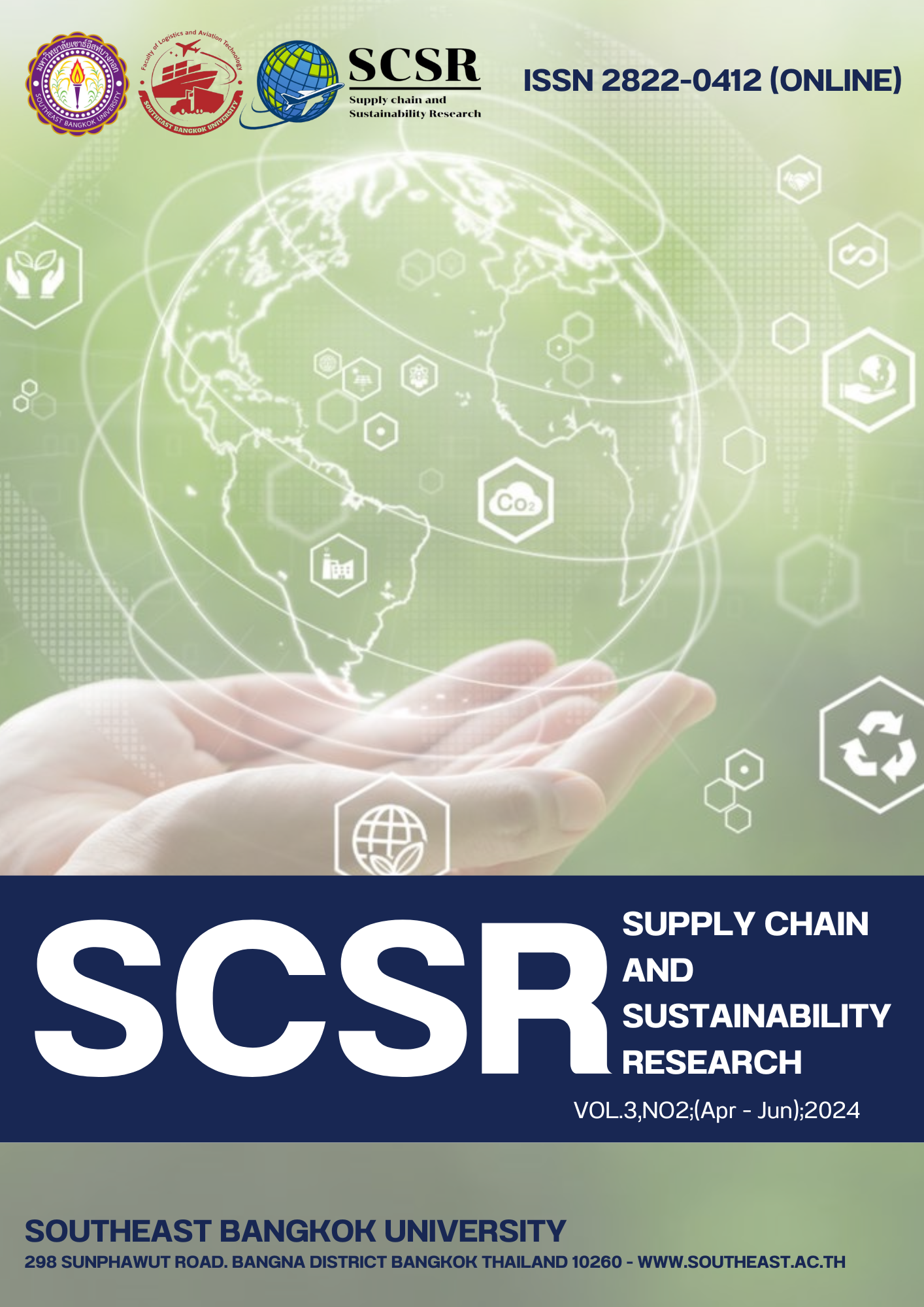Carbon Cut and Swap: Is Trading Emissions the Green Magic Bullet?
Main Article Content
บทคัดย่อ
This study assesses the efficacy of carbon emissions trading mechanisms in mitigating the release of carbon emissions. through a combination of literature review and empirical research. Findings indicate that while carbon trading can reduce emissions to some extent, its efficacy varies widely based on factors like quota setting, market participant behavior, and policy implementation. The study also explores the application of carbon trading in different regions, revealing varied effectiveness, with Europe showing better results than some emerging economies. Additionally, the paper addresses challenges such as market fluctuations, risks, and potential abuse by companies or countries, emphasizing the need for policy measures to ensure fair and effective market operation. In conclusion, the research suggests that while the carbon trading mechanism has some effectiveness, improvements are necessary to address existing challenges and enhance its role in reducing carbon emissions.
Article Details

อนุญาตภายใต้เงื่อนไข Creative Commons Attribution-NonCommercial-NoDerivatives 4.0 International License.
บทความนี้ได้รับการเผยแพร่ภายใต้สัญญาอนุญาต Creative Commons Attribution-NonCommercial-NoDerivatives 4.0 International (CC BY-NC-ND 4.0) ซึ่งอนุญาตให้ผู้อื่นสามารถแชร์บทความได้โดยให้เครดิตผู้เขียนและห้ามนำไปใช้เพื่อการค้าหรือดัดแปลง หากต้องการใช้งานซ้ำในลักษณะอื่น ๆ หรือการเผยแพร่ซ้ำ จำเป็นต้องได้รับอนุญาตจากวารสารเอกสารอ้างอิง
Baranzini, A., et al. (2017). Carbon pricing in climate policy: Seven reasons, complementary instruments, and political economy considerations. WIREs Climate Change, 8(4), e462. https://doi.org/10.1002/wcc.462
Borghesi, S., & Zhu, T. (2020). Getting married (and divorced): A critical review of the literature on (de)linking emissions trading schemes. Strategic Behavior and the Environment, 8(3), 219-267. https://hdl.handle.net/1814/68401
Bryant, G. (2016). The politics of carbon market design: Rethinking the techno-politics and post-politics of climate change. Antipode. Advanced online publication.
Gao, Y., Li, M., Xue, J., & Liu, Y. (2020). Evaluation of effectiveness of China's carbon emissions trading scheme in carbon mitigation. Energy Economics, 90, 104872. https://doi.org/10.1016/j.eneco.2020.104872
Hansjürgens, B. (Ed.). (2005). Emissions trading for climate policy: US and European perspectives. Cambridge University Press.
Haites, E. (2018). Carbon taxes and greenhouse gas emissions trading systems: What have we learned? Climate Policy, 18(8), 955-966. https://doi.org/10.1080/14693062.2018.1492897
Liu, Z., & Sun, H. (2021). Assessing the impact of emissions trading scheme on low-carbon technological innovation: Evidence from China. Environmental Impact Assessment Review, 89, 106589. https://doi.org/10.1016/j.eiar.2021.106589
Lo, A. (2012). Carbon emissions trading in China. Nature Climate Change, 2, 765-766. https://doi.org/10.1038/nclimate1714
Marin, G., Marino, M., & Pellegrin, C. (2018). The impact of the European Emission Trading Scheme on multiple measures of economic performance. Environmental and Resource Economics, 71, 551-582.
Martin, N., & Rice, J. (2009). Analysing emission intensive firms as regulatory stakeholders: A role for adaptable business strategy. Business Strategy and the Environment, 18(7), 455-465. https://doi.org/10.1002/bse.661
Roman, M. (2011). Carbon capture and storage in developing countries: A comparison of Brazil, South Africa, and India. Global Environmental Change, 21(2), 391-401. https://doi.org/10.1016/j.gloenvcha.2011.01.018
Zakeri, A., Dehghanian, F., Fahimnia, B., & Sarkis, J. (2015). Carbon pricing versus emissions trading: A supply chain planning perspective. International Journal of Production Economics, 164, 197-205. https://doi.org/10.1016/j.ijpe.2014.11.012


